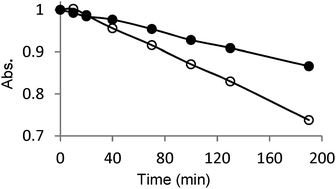Ultra-thin SiO2 layers on TiO2: improved photocatalysis by enhancing products' desorption
Abstract
A study on the photocatalytic degradation of contaminants (

* Corresponding authors
a
Department of Chemical Engineering and The Russell–Berrie Nanotechnology Institute, Technion, Haifa 32000, Israel
E-mail:
paz@tx.technion.ac.il
Fax: +972-4-8295672
Tel: +972-4-8292486
A study on the photocatalytic degradation of contaminants (

 Please wait while we load your content...
Something went wrong. Try again?
Please wait while we load your content...
Something went wrong. Try again?
M. Nussbaum and Y. Paz, Phys. Chem. Chem. Phys., 2012, 14, 3392 DOI: 10.1039/C2CP23202B
To request permission to reproduce material from this article, please go to the Copyright Clearance Center request page.
If you are an author contributing to an RSC publication, you do not need to request permission provided correct acknowledgement is given.
If you are the author of this article, you do not need to request permission to reproduce figures and diagrams provided correct acknowledgement is given. If you want to reproduce the whole article in a third-party publication (excluding your thesis/dissertation for which permission is not required) please go to the Copyright Clearance Center request page.
Read more about how to correctly acknowledge RSC content.
 Fetching data from CrossRef.
Fetching data from CrossRef.
This may take some time to load.
Loading related content
